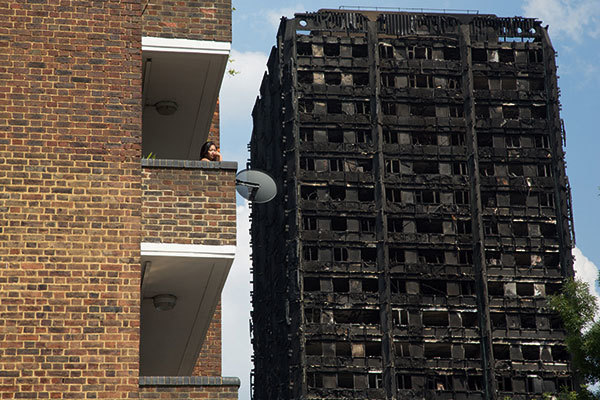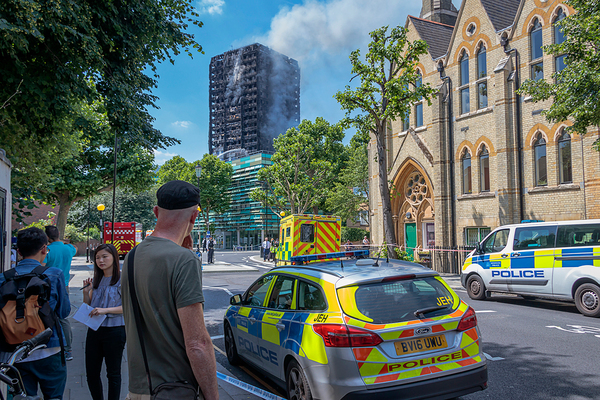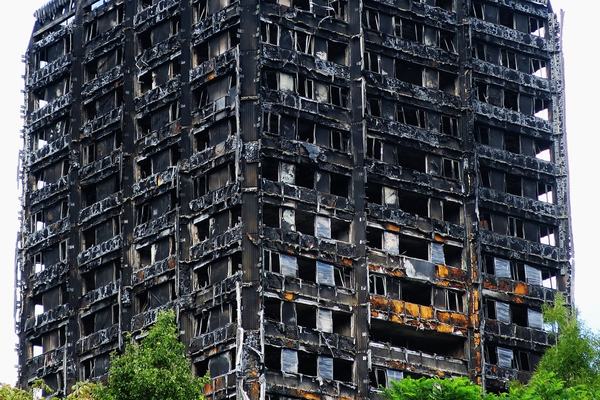You are viewing 1 of your 1 free articles
 Rebecca Rees
Rebecca ReesRebecca is a partner and Head of Public Procurement. She also leads the cross-firm Building a Safer Future team at Trowers & Hamlins. ...more
We need a radical rethink of procurement in the wake of the Hackitt Review
Relying on lowest price can result in flawed contracts, adversarial relationships and poor-quality outcomes, warns Rebecca Rees
The government’s independent review of the building regulations and fire safety has released its final report, Building a Safer Future. As expected, it made fierce criticisms of the regulatory system described as “unfit for purpose” and a building industry that values profit over ensuring safety of residents.
Dame Judith Hackitt has argued that the industry needed to think bigger, calling for “a radical rethink” to make high-rise buildings safer and to recapture public confidence in the building industry.
In keeping with this systemic overview, the report identifies the procurement process as the key stage that “sets the tone and direction of the relationships between the client, designer, contractor and their sub-contractors”.
Focusing on low costs at this stage in the process, the report argues, can reduce the likelihood that a building will be safe. Accordingly, poor procurement can create a ‘race to the bottom’ culture which prioritises “doing things as quickly and cheaply as possible, rather than delivering quality homes which are safe for people to live in”.
The report states that procurement processes should aim “to obtain best value, rather than lowest cost”. Particular criticism is made of contracts with low contractor margins, restrictive payment terms and retentions, which encourages contractors pushing technical and contractual risk to its supply chain, resulting in risks being handled by people who are unable to mitigate them appropriately.
The report makes it very clear that there is a difference between ‘best value’ and ‘lowest cost’, but this difference has always been acknowledged in the construction sector. The only surprise to readers is that Dame Judith and her team believe that this message still needs to be repeated.
“The report makes it very clear that there is a difference between ‘best value’ and ‘lowest cost’.”
Then again, perhaps this is worth repeating. Most public sector procurements in the UK – particularly for asset management, refurbishment and construction of social housing – are undertaken using price evaluation formulae that award top marks for the lowest price.
As the Hackitt Review confirms, lowest-price tendering shapes market behaviour – encouraging bidders to undercut their prices while paying lip service to quality. Is this what we aspire to in our procurements?
Lowest-price tendering always looks good on paper – securing competitive prices that allow clients to demonstrate they’ve obtained good value at the point of award. More often than not, lowest-price tendering simply stores up problems for the contract and delivery stages to address: poor performance, disputes and claims as the contractor attempts to recoup costs, or, in extreme cases, contract termination and contractor insolvency.
“We do not need to look far to find alternative price evaluation models – these already exist in the UK and the EU and could be adopted or adapted.”
Put bluntly, relying on lowest price can result in flawed contracts, adversarial relationships and poor-quality outcomes.
So what’s the alternative? We embrace innovation in other areas of construction, so why not procurement? Our inertia cannot be simply explained by rent cuts and shrinking budgets and, for once, EU procurement rules cannot be blamed. They allow contracting authorities to consider price and quality in the round and do not mandate lowest-price tendering.
They also allow for life cycle costing. Is it a lack of expertise and experience – or self-interest – in keeping price evaluation as easy as possible by simply adopting what we did on the last procurement? (Most consultants are also appointed on a lowest-price basis.)
Should we not be investing, as a sector, in finding a solution to this evaluation problem? We do not need to look far to find alternative price evaluation models – these already exist in the UK and the EU and could be adopted or adapted.
“We do not need to look far to find alternative price evaluation models – these already exist in the UK and the EU and could be adopted or adapted.”
There is bound to be work involved in making them fit for purpose for the UK construction sector in the 21st century, particularly as a number of them require clients to set an optimum or a target price as a scoring benchmark. This will require clients and their consultants to undertake in-depth analysis of budgets, market conditions and likely costings before running a procurement exercise.
Given the high profile of the Hackitt Review, there’s now more impetus than ever for clients to invest in alternative price evaluation models, abandon the race to the bottom, and let the market know that quality, service delivery and safety are paramount.
Rebecca Rees, partner, Trowers & Hamlins
The Hackitt Review
Photo: Tom Pilston/Eyevine
Dame Judith Hackitt’s (above) interim report on building safety, released in December 2017, was scathing about some of the industry’s practices.
Although the full report is not due to be published until later this year, the former Health and Safety Executive chair has already highlighted a culture of cost-cutting and is likely to call for a radical overhaul of current regulations in an interim report.
Dame Hackitt’s key recommendations and conclusions include:
- A call for the simplification of building regulations and guidelines to prevent misapplication
- Clarification of roles and responsibilities in the construction industry
- Giving those who commission, design and construct buildings primary responsibility that they are fit for purpose
- Greater scope for residents to raise concerns
- A formal accreditation system for anyone involved in fire prevention on high-rise blocks
- A stronger enforcement regime backed up with powerful sanctions














